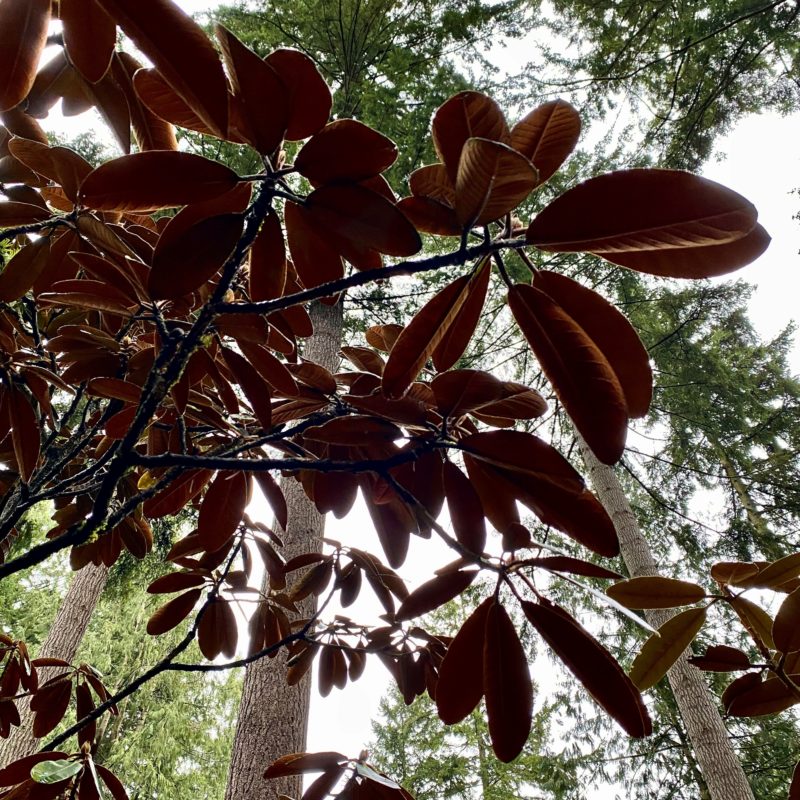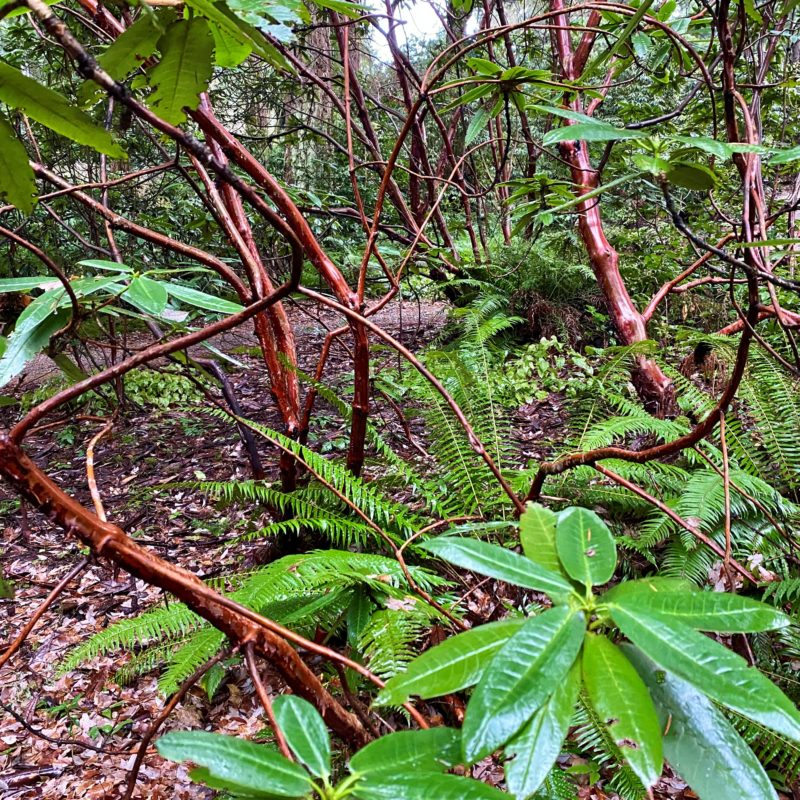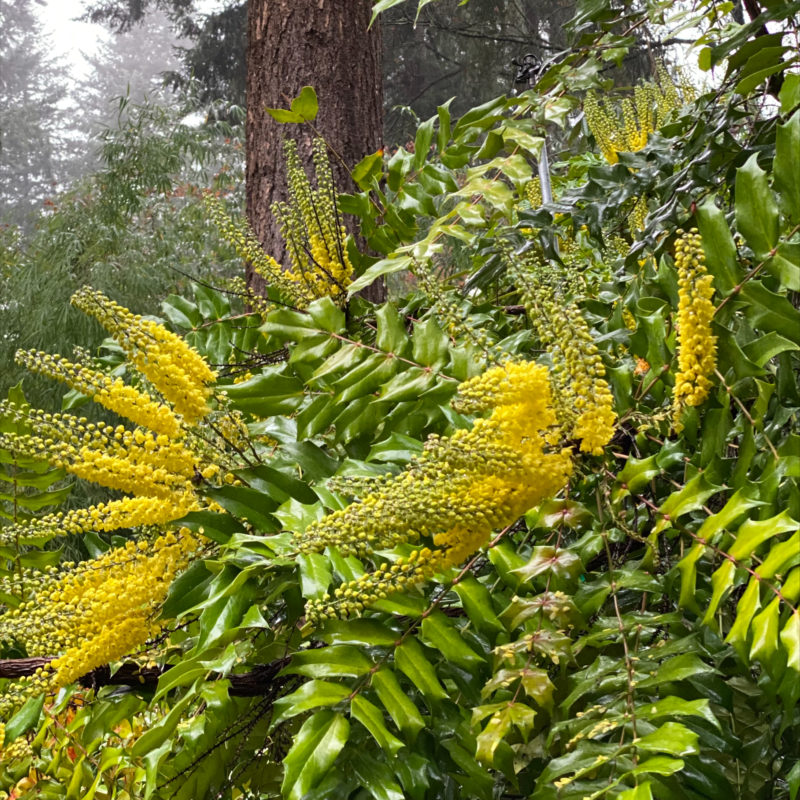January
By Emily Joseph
Seasonal Interest: Often labeled as the dead of winter, January probably ranks as the month of least interest in the minds of most botanical garden visitors. Yet amidst the quiet cold, bastions of the winter botanical world are showing off structure, spectacular bark, and swelling buds about to break, giving life to wonders only witnessed this time of year.
- Azalea & June Garden Just beyond the reach of the sculptural branches of the majestic bigleaf maple, Acer macrophyllum, on the edge of the Azalea Collection, Rhododendron sichotense ‘Midwinter’, close relative of dauricum, is about to begin its winter show. Nothing brightens a cloudy gray day like walking a garden path lined with a dense thicket of deciduous shrubs covered in electric pink blooms. Behind the floating cloud of pink, in grand scale with spiky textural leaves, the sulfur yellow firework-like blooms of several Mahonia x media are the earliest celebratory harbingers of spring. There are numerous species of Mahonia, Oregon grape, throughout the garden, along with the larger ornamental hybrid cultivars like ‘Charity’ and ‘Arthur Menzies.’ The sunny colored flower spikes are often thrumming with native Anna’s hummingbirds excitedly seeking out and sparring over the coveted winter nectar source.
- Glade & Alpine Garden On your way down through the heart of the garden, loop around the Meconopsis Glade following the intoxicating scent of the always reliably early blooming Edgeworthia chrysantha, or paperbush. Pendulous umbels open from pale grayish white to reveal bright yellow tubular flowers like ornaments delicately hung along angular branches. Continuing down through the alpine garden, gaze up through the intertwining limbs of Hamamelis mollis, the Chinese witch hazel, coated in flower clusters of golden yellow fringe that emit a deliciously citrusy scent. The structure and sensorial subtleties of the garden shine when deciduous leaves and herbaceous perennials are scarce.
- Pond Garden & Lower Woodland At the base of the garden, along the pond edge, find the striking sinewy cinnamon bark of Rhododendron barbatum, paired with the coppery peeling platelets of paper-like bark on Acer griseum, the paperbark maple. From here, and throughout the lower edge of the garden, the persistent spent blooms of the Hydrangea collection accentuate the woodland scenery. Below the canopy of conifers, a mid-level awning of Rhododendron foliage offers a bit of protection from the rain and the opportunity to marvel at species showcasing the largest leaves of the genus. When viewed from below, some reveal surprising color and texture, like the velvety orange-brown indumentum coating the undersides of the Rhododendron rex fictolacteum.
Finally, following the delicate perfume of the winter blooming Abeliophyllum distichum, white forsythia, take a final stroll through the retail nursery while on your way back up towards the Visitor Center.
Click on images below for full-size photos.
- Rhododendron rex ssp. fictolacteum
- Rhododendron sichotense ‘Midwinter’
- Rhododendron barbatum
- Mahonia x media




